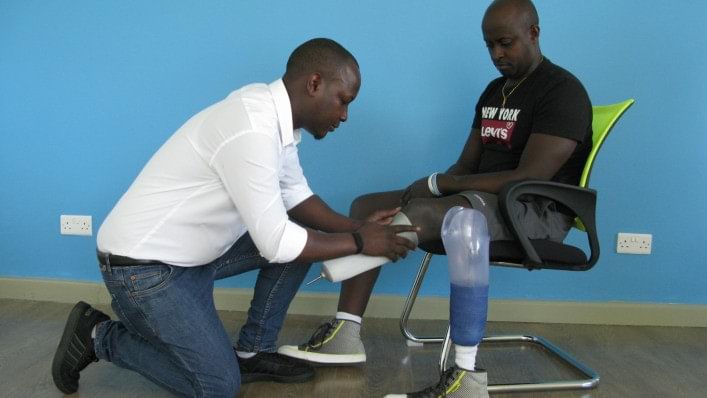Reasons for amputating

The most common causes for a leg amputation
An amputation is the severing of a bone in healthy tissue. When a body part is severed in a joint, one also speaks of disarticulation. An amputation is required when a diseased body part is not expected to heal and the patient's life is at risk as a result. Causes may include circulatory disorders, infections, accidents, cancer or a congenital malformation of the limbs (dysmelia). In some of the above cases, the need for an amputation is known some time in advance. On the other hand, amputations are sometimes necessary entirely unexpectedly, for example due to severe injuries after an accident.
Amputation in case of circulatory disorders
What are known as arterial occlusive diseases constitute the most common cause for amputations in the Western world. Aside from other metabolic diseases such as diabetes, what is known as "smoker's leg" is a very well known and widespread arterial occlusive disease. When blood flow is disrupted, the supply of oxygen to the leg is no longer sufficient. As an affected individual, you often experience pain especially while walking. The leg or foot are colder than the rest of the body and sometimes also bluish in colour. An amputation of the lower limb is performed only if circulation cannot be restored by other vascular surgery procedures. With partial amputations, the goal is also to preserve the rest of the foot or leg.
Amputation in case of diabetic foot syndrome
Diabetic foot syndrome is one of the most common causes for leg or foot amputations. Although more and more people are living to an advanced age and the number of persons with diabetes is thus rising, the number of amputations is changing very little. This is thanks to better care and new possibilities for affected individuals.
Diabetes mellitus generally causes several mutually reinforcing disorders.
- Reduced perspiration causes the feet and legs to dry out and crack.
- Sugar deposits in the nerves cause affected individuals to lose feeling so they no longer notice their cracks and wounds.
- Diabetes mellitus severely impairs wound healing.
- When sores are subjected to stress, the wounds get bigger. The tissue becomes inflamed and dies off.
There is also a risk that the foot and leg become inflamed more quickly because blood flow is disrupted by diabetes and the cells die off.
Amputation after an accident
The frequency of amputations after accidents – including for example work and traffic accidents – has decreased considerably in the Western world. There are many reasons for this, including higher occupational health and safety standards. Progress in the fields of intensive care and surgery means that nerves, vessels, bones and soft tissue of injured limbs can be restored in many cases, so an amputation as the last resort is unnecessary.
Amputation due to tumours
Amputations due to cancer are relatively rare. Frequently however, there are tumours close to the knee or in the area of the hip. About half of all amputations in the area of the hip and pelvis are due to tumours. The goal of an amputation in such cases is to save the patient's life by preventing the spread of cancer cells that would affect other parts of the body.
Amputation after an infection
Since Louis Pasteur described the effect of antibiotics in 1877, amputations due to infections have become extremely rare. The high antiseptic standards in medical care and tetanus shots are another reason for the decrease. Nevertheless, you need to be vigilant even with the tiniest injury. Signs of inflammation include reddening, swelling, fever and wound pain.
Also check whether your tetanus protection is still up to date. The Robert Koch Institute recommends a booster every ten years, or sometimes sooner in case of wounds. Please contact your doctor in any case.